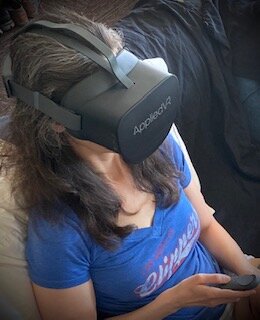Quell Customers to Receive $3.9 Million in Refunds
/By Pat Anson, PNN Editor
The U.S. Federal Trade Commission is sending refunds of nearly $3.9 million to consumers who bought Quell, a wearable nerve stimulation device touted as a drug-free treatment for chronic pain. The refunds are part of a settlement the FTC reached in March with NeuroMetrix – the maker of Quell – over deceptive advertising.
An FTC complaint alleged that NeuroMetrix and CEO Shai Gozani advertised Quell as an effective treatment for fibromyalgia, osteoarthritis, sciatica, shingles and other chronic pain conditions without reliable scientific evidence to back it up.
Two clinical studies cited in Quell advertisements had “substantial flaws,” according to the FTC, while a third study was based on a marketing survey conducted by the company to “generate potential advertising claims” about the device. The FTC also objected to claims that Quell was “clinically proven” and “FDA cleared” for chronic pain relief.
“Defendants engaged in their unlawful acts and practices repeatedly over a period of more than four years, continued their unlawful acts or practices despite knowledge of complaints that advertising claims for Quell were not substantiated and went beyond claims the FDA allowed for similar devices, and continued such deceptive advertising unabated until FTC staff notified them it would recommend law enforcement action,” the FTC complaint said.
Neurometrix settled the case – without admitting or denying the allegations – for $4 million. The company also agreed to stop claiming that Quell provides relief for chronic or severe pain beyond the knee area where the device is worn.
The FTC is using the settlement funds to send 2,144 refund checks and 67,998 refunds via PayPal to Quell purchasers. The average refund amount is $55.10 per customer. Consumers who do not receive a refund, but believe they should, should contact the refund administrator, Rust Consulting, at 1-866-403-6545.
The Quell device sells for $299, while an older version is available for $199. Quell is sold over-the-counter, does not require a prescription and is not usually covered by insurance.
NeuroMetrix recently announced that Quell will be used in a clinical trial on the use of transcutaneous electrical nerve stimulation (TENS) for chemotherapy-induced peripheral neuropathy The study is being conducted at the University of Rochester School of Medicine and Dentistry, with funding from the National Institutes of Health. Quell is also being evaluated in a small study as a treatment for fibromyalgia.








